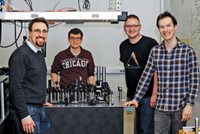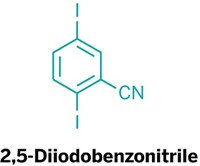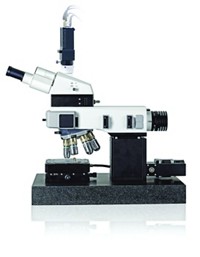Advertisement
Grab your lab coat. Let's get started
Welcome!
Welcome!
Create an account below to get 6 C&EN articles per month, receive newsletters and more - all free.
It seems this is your first time logging in online. Please enter the following information to continue.
As an ACS member you automatically get access to this site. All we need is few more details to create your reading experience.
Not you? Sign in with a different account.
Not you? Sign in with a different account.
ERROR 1
ERROR 1
ERROR 2
ERROR 2
ERROR 2
ERROR 2
ERROR 2
Password and Confirm password must match.
If you have an ACS member number, please enter it here so we can link this account to your membership. (optional)
ERROR 2
ACS values your privacy. By submitting your information, you are gaining access to C&EN and subscribing to our weekly newsletter. We use the information you provide to make your reading experience better, and we will never sell your data to third party members.
Analytical Chemistry
ACS Meeting News: A protein’s ‘dance steps’ affect its biological function, study shows
by Celia Arnaud
April 4, 2017

Credit: Courtesy of Marco Allodi
Magnetic resonance imaging (MRI) maps the positions of molecules in the body using radio frequency pulses and a magnetic field gradient. Researchers led by Gregory S. Engel of the University of Chicago now propose an optical analog of MRI that instead maps the positions of molecules in materials with laser pulses, one of which is tilted to hit a sample at various times.
According to Marco A. Allodi, a postdoctoral scholar in Engel’s group, “time is something we as ultrafast spectroscopists can measure with incredibly high precision.” Allodi described the new optical resonance imaging method yesterday at the American Chemical Society national meeting in San Francisco during a session organized by the Division of Analytical Chemistry. The group initially reported the theoretical underpinnings of the technique in November (ACS Photonics 2016, DOI: 10.1021/acsphotonics.6b00694). The researchers think the method could become a way to collect wide-field superresolution images with femtosecond time resolution.
The set-up of the new optical resonance imaging technique is much like that used in two-dimensional electronic spectroscopy. Three laser pulses hit a sample. The first two pulses put the sample in an excited state. The third pulse stimulates optical emission, also called a photon-echo signal. The arrival time of the signal at the detector is measured relative to the arrival time of a reference pulse.
The third pulse is key to the technique’s imaging capability. Allodi and coworkers use a diffraction grating to tilt that pulse. “If you tilt your laser pulse, the top part of the pulse hits the sample before the bottom part,” Allodi said. Hitting the sample at different times causes different time delays in the photon-echo signal. The researchers use those delays to calculate the position where the signals originated, making it possible to map a sample.
The three pulses should allow the team to get spectroscopic information as well as spatial information. “We have all the time delays that you typically scan in a 2-D electronic measurement,” Allodi said. “That means we can spectroscopically resolve the information we’re getting.”
Allodi and his colleagues didn’t manage to acquire an image before the ACS meeting. They have all the equipment in place, but they are still dealing with “all the subtleties that go into making an ultrafast experiment work,” Allodi told C&EN.
Once they get the system running, the first materials they plan to image are formamidinium lead iodide perovskite films, substances of interest for solar cells. “If you make them into thin films, they wind up with little patches that have grain boundaries on the order of two to five micrometers,” Allodi said. If the method achieves the 5-μm resolution that the team expects with its initial set-up, the group should be able to observe the grain boundaries and any interesting dynamics that happen at the interface.
“The idea that the Engel group is developing is ingenious,” said Martin T. Zanni, an expert on ultrafast multidimensional spectroscopy at the University of Wisconsin, Madison, commenting on the ACS Photonics paper. “It brings a new concept to optical spectroscopy that will get people thinking.”
Related stories:





Join the conversation
Contact the reporter
Submit a Letter to the Editor for publication
Engage with us on Twitter